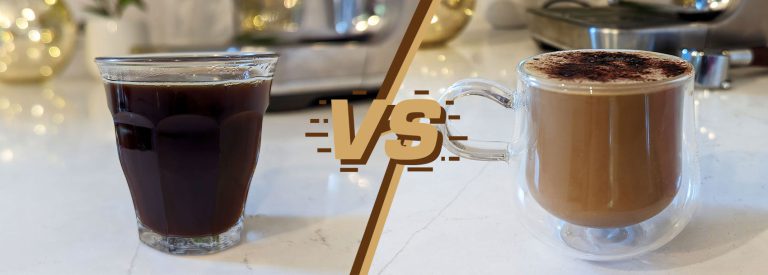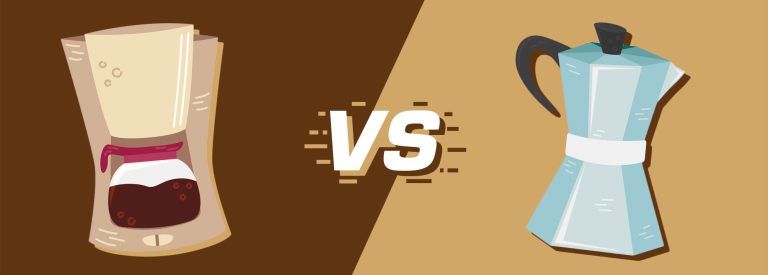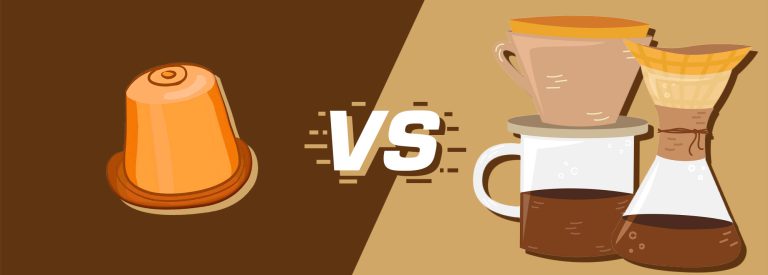Lungo vs Macchiato: Comparing “Long” and “Marked” Espressos
Coffee culture continues to increase in popularity in 2024, turning drinks such as Lungo and Macchiato into household names among coffee lovers.
But not everyone is familiar with what these two beverages are. I’m here to change that, so in case you’re curious about what sets these coffee drinks apart, you’ve landed on the right page.
I’ll guide you through the specifics of Lungo and Macchiato, discussing their ingredients, ratios, how to make them, and many more interesting, albeit not so shocking facts about them.
Key takeaway: What’s the difference between a Lungo and a Macchiato?
The Lungo is made with a coffee-to-water ratio of 1:4 to 1:5, resulting in a strong, slightly bitter profile that is less concentrated than traditional espresso. In contrast, the Macchiato uses a standard espresso with a brew ratio of around 1:3, marked with just a touch of frothed milk, giving it a hint of creaminess, while maintaining the dense and syrupy features of straight espresso.
Now onto the details of each drink.
What is a Lungo?
Lungo, which translates to “long” in Italian, is a variation of espresso that found its popularity in Europe. By letting more water run through the coffee grounds in the espresso machine’s portafilter, the drink offers a milder flavor, while keeping the signature characteristics of espresso. There is a catch though, which I’ll get to soon.
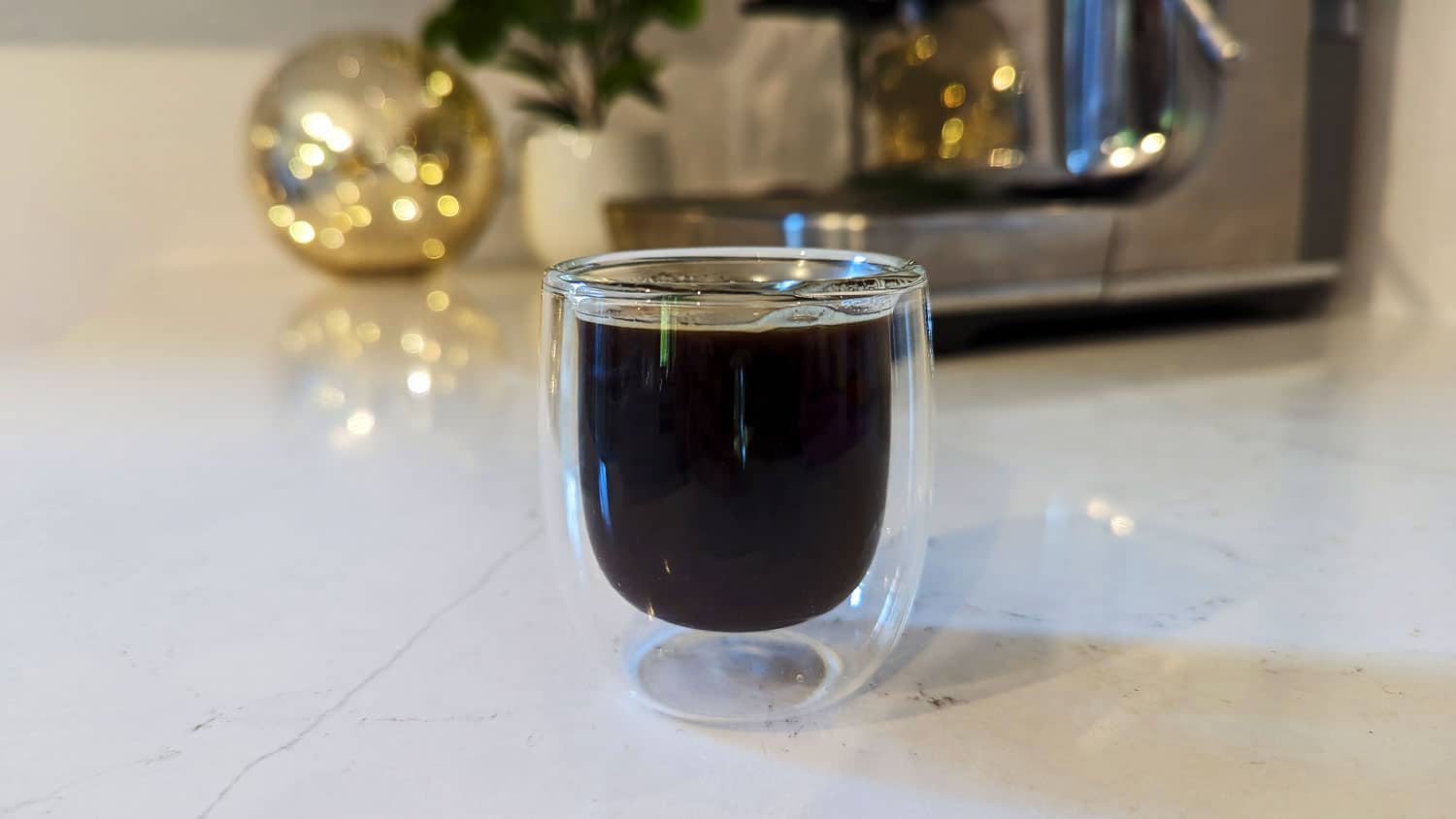
With a coffee-to-water ratio of around 1:4 to 1:5, a traditional Italian Lungo uses 7 g of ground coffee (while third-wave specialty coffee requires 9g). You’re looking at a serving size of just under 2 oz (60 ml). If you’re in a café, your Lungo would be served in a larger demitasse, one with a capacity of about 90 ml (3 oz). And for those watching their caffeine and calorie intake, it has about 60-80 mg of caffeine and just 2 calories per shot.
As for its flavor, a Lungo maintains a strong, slightly bitter profile but is less concentrated than traditional espresso. The intensity is there, but not overpowering. It can get a bit bitter due to the longer extraction time though, so it’s best to coarsen up your grinds slightly, to let the water flow faster, and achieve the 1:4 coffee to water ratio in around 35 seconds.
Its texture sits somewhere between that of an espresso and an Americano – thicker than an Americano, yet not as syrupy as espresso.
Here are the steps to making a Lungo:
- Grind coffee beans using a setting slightly coarser than for espresso.
- Use a timer and scale to measure your yield while brewing.
- Aim to stop brewing around the 35-second mark, targeting a 1:4 to 1:5 coffee-to-water ratio.
If you want a more detailed guide, check out my article on how to make a Lungo.
Now let’s explore Macchiato.
What is a Macchiato?
Hailing from Italy, Macchiato means “stained” or “marked”. This refers to an espresso marked with just a touch of frothed milk, as you can see on my picture below. It’s popular for its strong and rich flavor with just a hint of creaminess added.
Now I noticed you looking at my demitasse, it is quite nice. Here is a list of my favorite espresso cups, but I like this one the most.
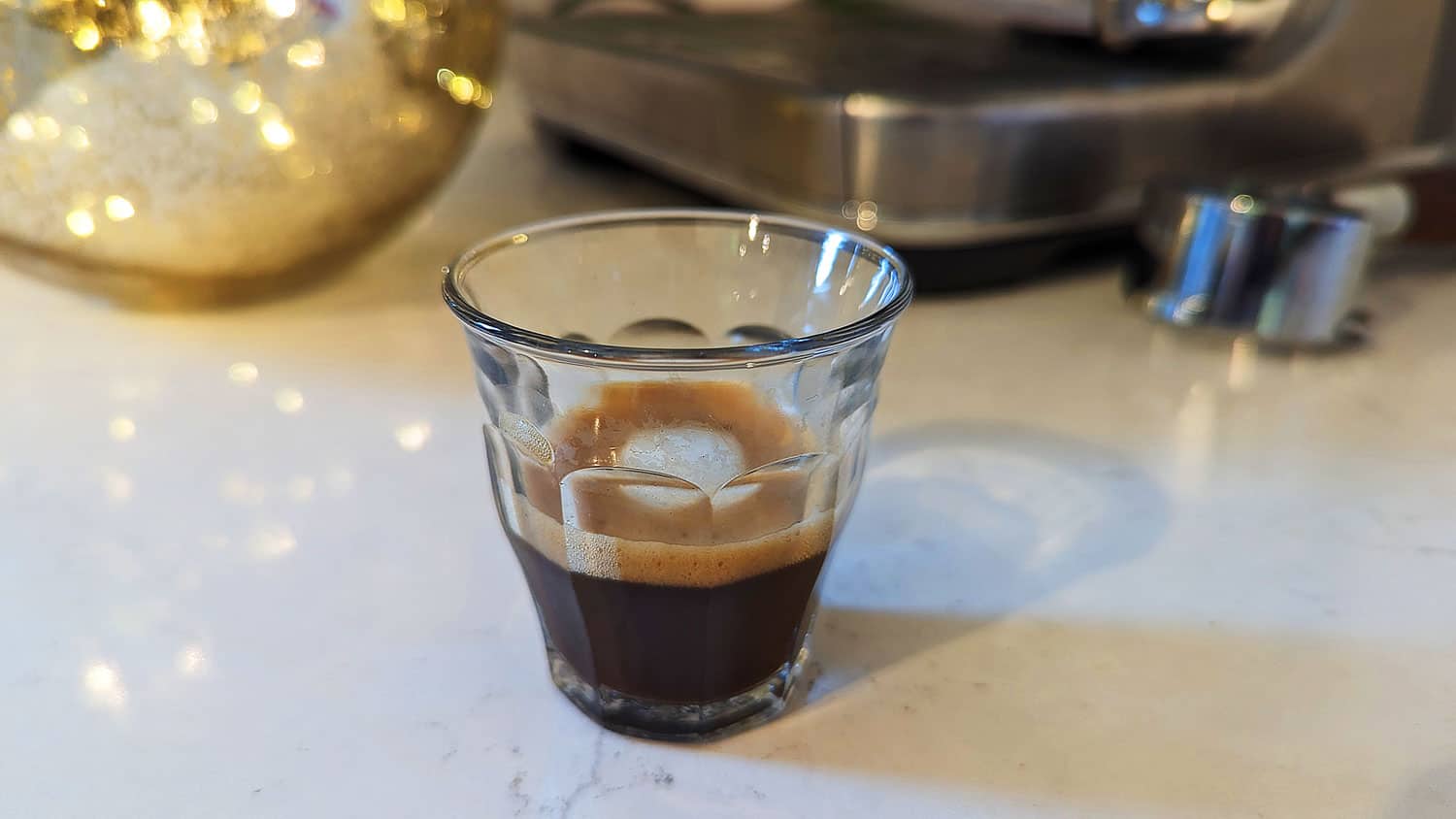
A traditional macchiato uses a standard espresso with a brew ratio of 1:2 to 1:3, where you’d need 7g of ground coffee for a single shot, while third-wave specialty coffee uses 9g as always. After pulling the espresso, a dollop or about a spoonful of milk froth is added on top.
Once brewed, the serving size for Macchiato hovers around 1.3 to 2 oz (39-60 ml), which is served in a demitasse with a capacity of 60-90 ml (2-3 oz). With regards to its nutritional content, it contains about 60-80 mg of caffeine per 1 oz shot of espresso and about 8 calories due to the small amount of milk.
About its flavors, the small milk dropped on top slightly softens the robust flavors of the espresso, introducing a hint of creaminess without masking the coffee’s intensity. Just like the flavor, the texture of the macchiato is slightly creamier while maintaining the dense and syrupy features of straight espresso.
Don’t get it confused with the modern macchiato though. Made more popular by Starbucks, the modern take on this drink is a lot different. Instead of a dollop of frothed milk, it uses steamed milk that’s just a little less than what a latte uses. I don’t even know why they call it the macchiatto?!
But anyhow, if you want to make a real one, follow these steps:
- Brew a shot of espresso.
- Prepare warm frothed milk, either with a whisk or a steam wand.
- Add a dollop of milk froth for that traditional touch or include a bit of steamed milk for a modern twist.
You can also check out my step-by-step recipe on how to make a macchiato.
Lungo & Macchiato Compared: Similarities and Differences
Here’s a comparison of the key characteristics of Lungo and macchiato:
| Aspect | Lungo | Macchiato |
|---|---|---|
| Taste and Texture | Strong, slightly bitter, less concentrated than espresso | Strong with a hint of creaminess from the milk |
| Coffee-to-Water Ratio | 1:4 – 1:5 | Espresso ratio of 1:2 to 1:3 |
| Ingredient Ratio | Just coffee | 1 shot of espresso & a dollop of milk |
| Typical Serving Size | 2 oz (60 ml) | 1.3 to 2 oz (39-60 ml) |
| Caffeine Content | 60-80 mg per single shot | 60-80 mg per 1 oz shot of espresso used |
| Calories | 2 calories per shot | 2 calories per shot of espresso + 8 calories with milk dollop |
| Acidity | Moderate | Moderate |
| Brewing Difficulty | Intermediate | Home barista |
| Bean Roast | Light to medium roasts | Medium roasts |
Now let me explain these comparisons further:
- Ground Coffee Weight & Ratios: The Lungo and macchiato both use 7g of coffee grounds (9g for third-wave coffee) but the Lungo follows a 1:5 coffee-to-water ratio while the macchiato maintains 1:2 to 1:3 for its espresso. After the espresso shot, a macchiato is topped with a dollop of frothed milk.
- Taste: Lungo has a strong and slightly bitter profile, but it’s milder than a straight espresso. Meanwhile, macchiato keeps the robust flavors and dense texture of espresso while adding just a hint of creaminess from the milk.
- Volume, Calories, & Caffeine: A serving of Lungo is 2 to 3 oz with 60 to 80mg of caffeine and only 2 calories per shot. A macchiato has the same caffeine content but is less in volume as it comes in just 1.3 to 2 oz servings. The calorie count is a little bit more, about 8 calories per cup.
- Bean Roast: For Lungo, I use light to medium roasts because they help balance the slight bitterness in my cup. As for macchiato, I find that medium roasts work best, complementing the boldness of brewing espresso and harmonizing with the milk.
- Milk: Unlike the Lungo, which is basically black coffee, the macchiato requires frothed full-fat milk. You can also steam milk to make the modern version of this drink. If you need help with this, follow my step-by-step guide on how to steam milk.
- Serving Suggestions: I rarely make Lungo for myself because I’m not a big fan of its bitter notes, or having to alter my grind size just for a cup of lungo. Instead, I drink Americano or V60 coffee whenever I want a milder cup than espresso. Macchiato is another choice if you want just a little less intensity by adding milk, but not as much milk as a cortado.
Both drinks are good options for those who want a less intense espresso. Lungo uses more water and macchiato requires a dollop of milk to achieve it, ultimately offering different results.
Before you get started in brewing these coffee drinks though, I recommend that you first check out the best espresso coffee beans this 2024.
Conclusion
While I’ve been making both drinks for years, I have to say that macchiato would be my pick between the two. I really like that it fills the gap between the robustness of straight espresso and the creaminess of larger espresso and milk coffees.
But that’s just my preference. I’d like to know your thoughts too about these two drinks. Feel free to share them in the comments section below.


